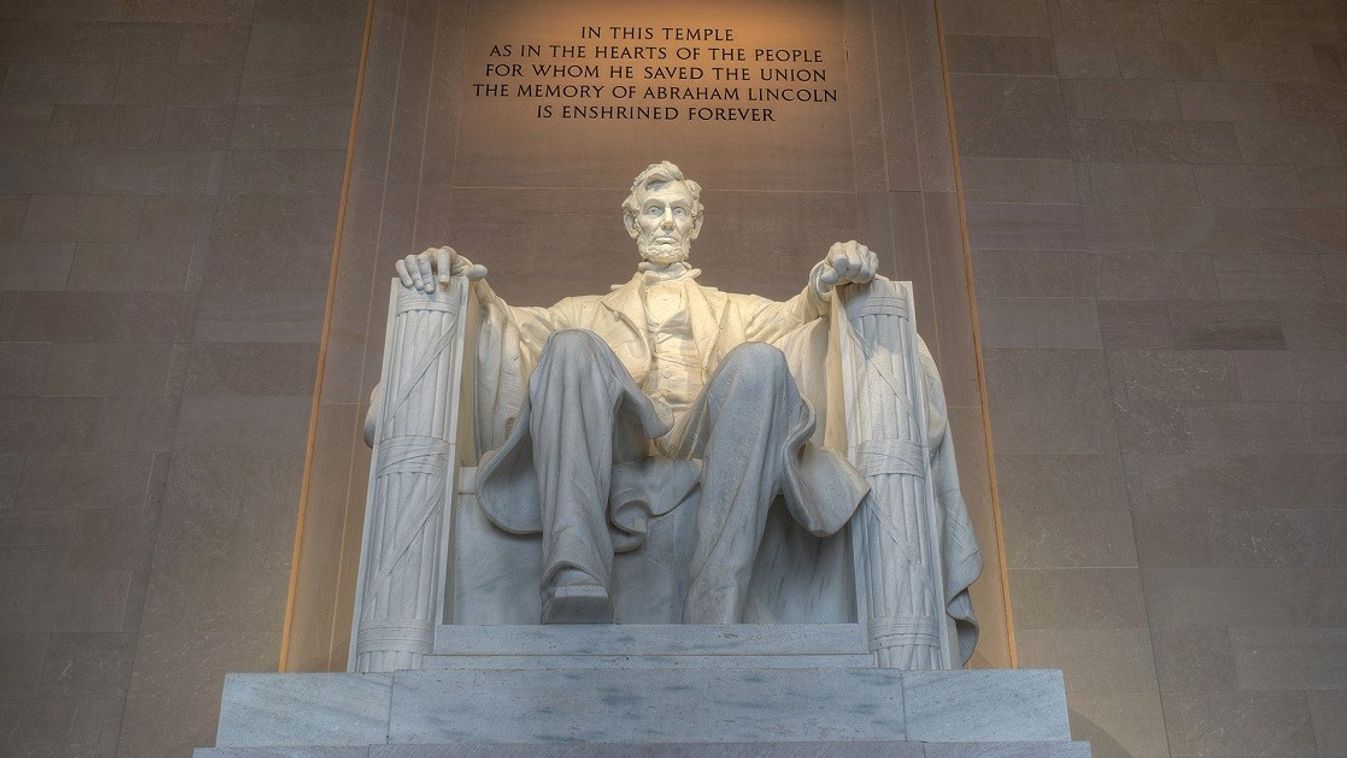Két út áll az Európai Unió előtt: az egyik a történet végét jelentené

Egyre világosabb, Orbán Viktor miért hangoztatja régóta, hogy a brüsszeli politika irányát meg kell változtatni.

“Many political controversies revolve around the claim that the Federal Government is intruding on the rights of individual states and imposing goals that stand at odds with the values of their citizens” – Marc Eisner, professor of Wesleyan University pointed out in a conversation with Lénárd Sándor.



In the course of the growth of the “administrative state,” power has been taken away from the states and centralized in Washington. What are the consequences of this trend both for the American politics as well as for the regulation of the economy?
Certainly, there has been something of a nationalization of politics in the U.S., which has created ongoing tensions.
Many political controversies revolve around the claim that the federal government is intruding on the rights of individual states
and imposing goals that stand at odds with the values of their citizens. Certainly, these claims were evident in the efforts to battle the COVID-19 pandemic. Some states simply rejected the guidance of the federal government and the Centers for Disease Control, compromising the response to the pandemic.
Although there has been a nationalization of politics, one should not understate the ongoing power of federalism. Even today, many federal policies depend on the support of the states because many powers are either concurrent or were reserved for the states under the Constitution. In many policy areas—education, social welfare, healthcare—the federal government must incentivize states through the provision of grants-in-aid. But in each of these policy areas, there is something of an uneven patchwork, a reflection of federalism.
Turning to regulation, the rise of regulation and the growth of the administrative state occurred in tandem. In 1946, Congress passed the Administrative Procedure Act to force a higher level of transparency and accountability in the promulgation of regulations. It required that agencies publish advanced notice of new rulemakings in the Federal Register, solicit public comments, and respond to the most significant comments before publishing a final rule. The procedural requirements of rulemaking became more complex in the 1970s, often taking the form of quasi-judicial proceedings with cross examination. Given the high costs of contemporary regulations, presidents simultaneously became far more active in regulatory clearance. Since 1981, they have required that significant new regulations be justified through the application of cost-benefit analysis under the supervision of the White House’s Office of Management and Budget. Arguably, this has produced better regulations that are grounded in a more thorough consideration of science and the economic impact on subnational governments and small businesses. At the same time, as the process has become more complex, significant new rules may take a decade or longer to come to fruition.
What is the relation between this centralization of power, the decreasing rights and prerogative of states and the political polarization in the country?
There are vigorous debates about the causes of polarization. Returning to the theme of sectionalism, as a consequence of the Civil War, the Democratic Party was a coalition of Northern liberals and Southern conservatives; the Republican Party combined diverse elements as well. Reflecting the legacy of the Civil War, Southern Democrats were strong advocates of states’ rights, particularly with respect to what they perceived to be federal intrusions into local race relations. The process of polarization, may argue, has been an ideological sorting that was sparked by the Civil Rights Act (1964) and the Voting Rights Act (1965). In the subsequent decades, conservative Southern Democrats gravitated toward the Republican Party, bringing with them a greater affinity for states’ rights and an animus toward the federal government.
There is much to suggest that the polarization has been asymmetrical.
That is, the Republican Party has moved decisively to the right whereas the movement of the Democratic Party to the left has been much less pronounced. Each party now functions in its own ecosystem of interest groups, think tanks, and media sources. It often seems as if the two parties—and many of their constituents—operate in separate universes grounded in their own set of assumptions and facts.
Although I must add that in the past decade or so the Democratic Party or at least some of its platforms also embraced the ideology of the radical left. This also tends to pull democrats to the left. How do you see this trend?
Certainly, this has been the case. The current efforts under President Biden to secure a $3.5 trillion expansion of the welfare state would have been unimaginable in the Democratic Party of the 1990s, which adopted a much more moderate posture on social welfare and a number of other issues. But there is consensus that the movement has been more significant on the right.Some of your recent work has focused on the impact of polarization on regulation. How are the two related?When Congress passed the core social regulatory laws in the 1970s, it wrote exhaustively detailed and prescriptive statutes in an effort to prevent presidents from departing from congressional preferences in ways that were overly accommodative to regulated interests. Laws like the Clean Air Act Amendments (1970) and the Clean Water Act (1972) were passed with large bipartisan majorities. Under current levels of polarization, the moderates that were essential to build these majorities have disappeared. Legislative productivity has plummeted. Old statutes cannot be updated, significant new statutes are rarely passed, and administrators lack the flexibility to adapt the old laws to address new problems. The regulatory state has ossified. It has not been recalibrated to reflect new learning in regulation or to provide a basis to address problems, the importance of which could not be foreseen in earlier decades. Political scientists refer to this as a process of “drift.” Policies may appear to be superficially stable, but they no longer serve the intended function.
One of the impacts of a polarized Congress has been increased incentives for presidential unilateralism. That is, there has been a greater reliance on executive orders, presidential memoranda, and informal bargaining between interest groups to circumvent Congress and pursue policy goals.
Presidents understand that a Congress that cannot legislate cannot respond to unilateralism.
However, changes wrought through unilateralism are limited in their efficacy by their tenuous statutory foundations and their vulnerability to court challenges and the actions of new presidents. The stop-go cycle in regulation was clearly exhibited in climate change policy. Absent new statutes, President Obama was forced to ground climate policy on various provisions of the Clean Air Act Amendments of 1990 that were intended to regulate other kinds of pollutants. The key components of Obama’s climate policy—greenhouse gas regulations for auto emissions and the electricity sector, participation in the Paris Agreement—were swept away by Trump. Biden made it one of his first tasks as president to reverse the policy changes introduced by Trump. What one president can create, another can take away. Meanwhile, climate change continues to accelerate.
When is regulation helpful and when is it detrimental? How would you address the shortcomings?
Regulation is often justified as a response to various forms of market failure, for example, monopoly power, negative externalities, or information asymmetries. While the existence of a market failure provides part of an answer, there can be problems of government failure as well. Regulations may be used to create barriers to entry or to reward particular firms. Many technology-based regulations can be overly rigid, impeding innovation. For the past few decades,
many analysts have moved from the concept of regulation to the broader concept of governance,
where regulations can work leverage supply-chain pressures, trade association programs, and international standards. To the extent that regulation can reinforce corporate self-regulation among firms that are exhibiting higher levels of social responsibility and promote transparency and accountability, it can address some of the shortcomings of traditional regulation. Of course, there will always be firms that impose externalities on society because they work with thin profit margins, lack the ethos, or are organizationally incompetent. For these firms, standard command-and-control regulation may be the only recourse.
The European Union might have its own problems with democratic deficit and democratic accountability. In addition, it has its own “administrative state” that is increasingly interfering and overriding the law-making powers of the Member States of the EU. What are the main lessons the Europeans should be mindful of concerning the American experience?
There are a few lessons. First, as noted earlier, during the “environmental decade,” Congress passed exhaustively detailed statutes that limited the discretionary authority delegated to administrators. This reflected dual concerns over regulatory capture and the power of the president over the administrative state.
While Congress was successful in locking in its preferences, this strategy created barriers to innovation and limited the extent to which agencies could integrate regulations with private sector governance.
The first lesson would be to pay careful attention to the tradeoff between certainty of results and administrative flexibility.
Second, in the United States, many of the core regulatory duties were delegated to the states. Take the case of environmental policy. Under the Clean Air Act, states were responsible for developing and executing state implementation plans to meet air quality standards, permitting, conducting inspections, and prosecuting violations. Under the Clean Water Act, they assumed a parallel set of responsibilities. But the states varied dramatically in their administrative capacities, the willingness of state legislators to fund their own regulatory agencies, and their commitment to federal regulations. Some states feared that vigorous regulation would compromise their ability to attract new investment. Other states, in contrast, went beyond federal standards. This created an uneven patchwork that continues to exist today. A second lesson from the US experience would be to focus on the administrative capacities of individual member states and provide assistance, both technical and financial, where necessary. A third and related lesson: while flexibility is important, as I said earlier, we must understand that it can be exercised in ways that compromise the quality of regulation. Flexibility must be combined with careful oversight to guard against this outcome.
You have been researching economic globalization and its effects on the American political economy. How could regulation respond to the downsides of globalization?
There are ongoing fears that globalization unleashes a regulatory race-to-the-bottom, as nations compete for investment. While there is some basis for this concern, there is also ample evidence that it may also create incentives for firms to improve their performance to access global supply chains. Certification under the International Organization for Standardization’s ISO 14000 series of standards has grown at a rapid pace among companies headquartered in nations with weaker regulatory systems. They need a way to provide a verifiable signal to other companies if they want to receive contracts. One would assume that these firms would also have incentives to place pressure on their own governments to elevate the quality of their domestic regulations. Ideally, regulations in the U.S. and other wealthy nations would be integrated with these and other standards to reinforce this trend, once again moving from a system of traditional regulation to one of governance. Unfortunately, significant changes to the regulatory system are difficult to achieve given the high levels of polarization and gridlock.
Many scholars point out that the principle of subsidiarity help alleviate the downsides of polarization as it brings public policy decisions closer to local population. Even if it might not be as efficient as a decision-making process on a higher level, it is still capable of engaging people and thus increasing democratic legitimacy. How do you see this view and how can subsidiarity be better enforced on both sides of the Atlantic?
There is a lot to be said in favor of subsidiarity although I am somewhat skeptical that it would provide a cure for the current polarization. In the U.S., for example, public education—the most decentralized and locally controlled of any of our policies—has been infected by the same intense polarization we see in national politics. Consider school boards, democratically elected bodies that enshrine local control over primary and secondary education.
Their meetings, once sedate and poorly attended affairs, have become forums for activists waging battles over critical race theory, masks, and vaccine mandates.
That being said, greater delegation to the local level and democratic deliberation may provide part of a solution to the fear that policies are being imposed from above.